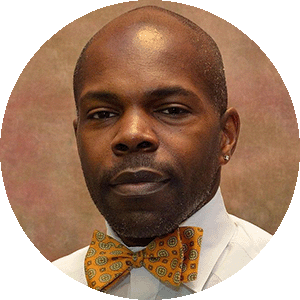Women's History Month 2024

Emma Kaufman
Principal Strategist
Portfolio for Women
Message from our Strategist
I am thrilled to invite you to join us throughout March as we celebrate Women’s History Month with NIH’s theme, “Embracing Intersectionality.”
Women play pivotal roles in shaping our world, breaking barriers, and challenging the status quo. This month, we recognize the unique stories and contributions of women as shaped by the intersection of their identities and experiences. By embracing the interconnectedness of gender, race, disability, ethnicity, socioeconomic status, and more, we show our support for women at the NIH and ensure that they feel seen and valued.
Our events and content this month will highlight the diverse narratives within our NIH community and foster unity and appreciation for the strength that comes from our differences.
Let us unite in honor of the incredible women who have shaped NIH and make Women's History Month a celebration of diversity, resilience, and the power of intersectionality.

Monica M. Bertagnolli, M.D.
Director
National Institutes of Health

Kevin D. Williams, Esq.
Director
EDI
Message from Leadership
Dear Colleagues,
As we begin the month of March, it is with great enthusiasm and pride that we join the nation in celebrating Women’s History Month. This annual observance provides us with a valuable opportunity to recognize and honor the remarkable contributions of women throughout history.
NIH’s theme for this year’s Women’s History Month is “Embracing Intersectionality.” Intersectionality, a concept first coined by Kimberlé Crenshaw in 1989, holds significant meaning in our pursuit of diversity, equity, inclusion, and accessibility (DEIA) at NIH. Intersectionality acknowledges the interconnected nature of social categories such as gender, disability, race, class, and more. The concept also emphasizes the importance of examining how different forms of oppression and privilege intersect and shape unique experiences for individuals with multiple marginalized identities.
Our agency is built on the strength of its diverse workforce, and this diversity is the source of our innovation, resilience, and excellence. Women from all walks of life have played pivotal roles in shaping our agency’s success, and we appreciate the diverse backgrounds, perspectives, and experiences that each NIH employee brings to the table.
In celebration of this month, we encourage you to participate in events and acquaint yourself with the achievements and experiences of women. On March 19, please join the HHS Office of Equal Employment Opportunity, Diversity, and Inclusion’s National Policy and Programs Division Director Bonita V. White in a virtual fireside chat with HHS Deputy Assistant Secretary (DAS) for Equity, Diversity, and Inclusion and Chief Diversity Officer, Karen Comfort. DAS Comfort will reflect on her career and share her vision for DEIA within HHS. As you tune in, pay close attention to the intersectional nature of the experiences, and allow yourself to consider alternative perspectives.
We invite you to reflect on the resilience and the unique traits that define the individuality of women. By embracing intersectionality and celebrating our diversity, we can continue fostering a work environment where both our staff and the communities we serve are seen, heard, and appreciated.
Please visit EDI’s website, explore the blog posts, follow the office on LinkedIn and X, and watch EDI’s YouTube channel to stay informed on the exciting events happening this month.
Last, I am excited to share that the NIH Sexual and Gender Minority Research Office (SGMRO) will be hosting numerous events throughout the month to highlight advances made in SGM health research and to launch new resources seeking to enhance the inclusion and representation of these populations in research. More information regarding these events can be found on the SGMRO Pride at NIH webpage.
I hope you will join us in observing Pride Month, celebrating the broad diversity of SGM communities, and recognizing the work that remains in both increasing inclusion of LGBTQI+ populations in the work that we do and in understanding and reducing health disparities within these communities.





